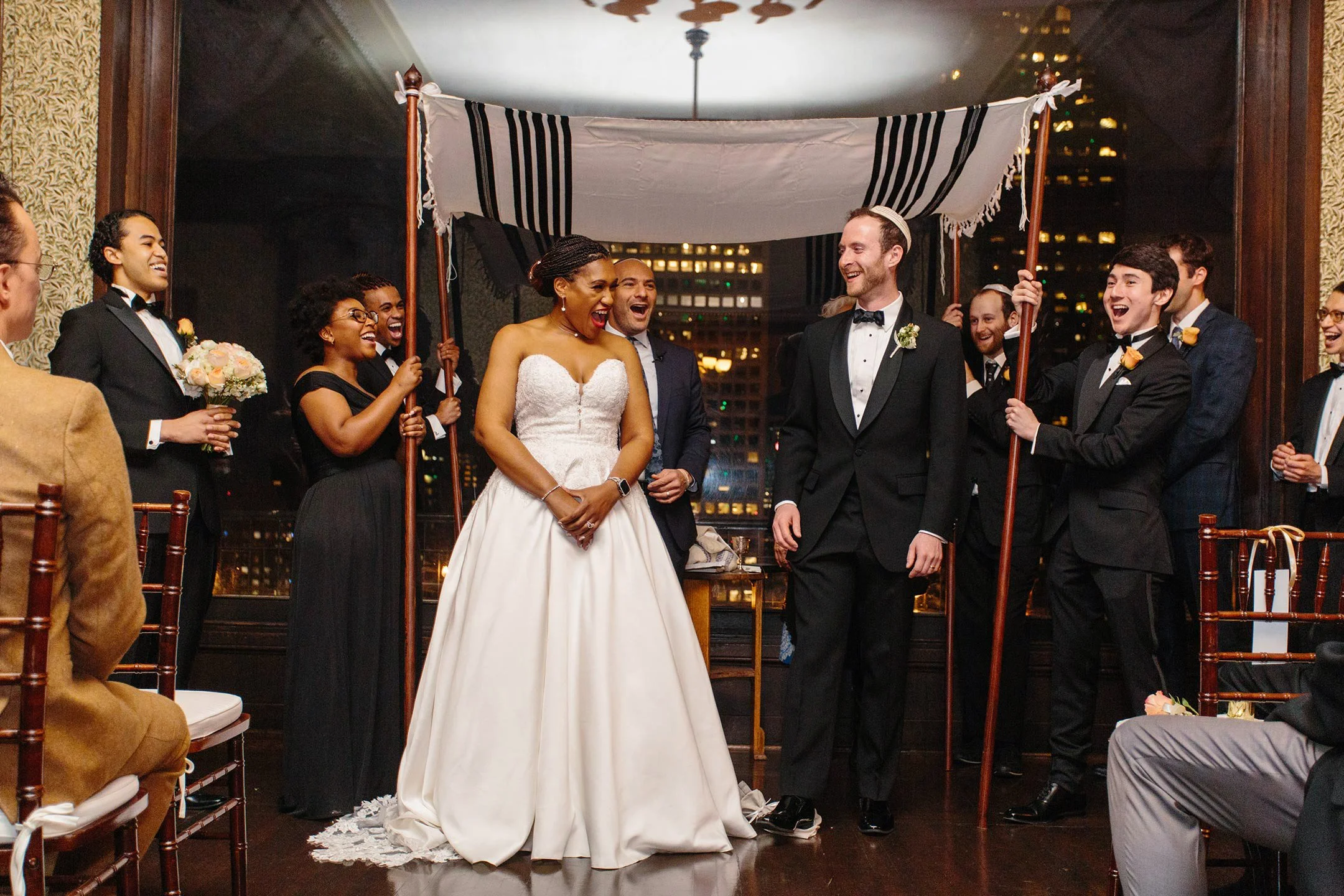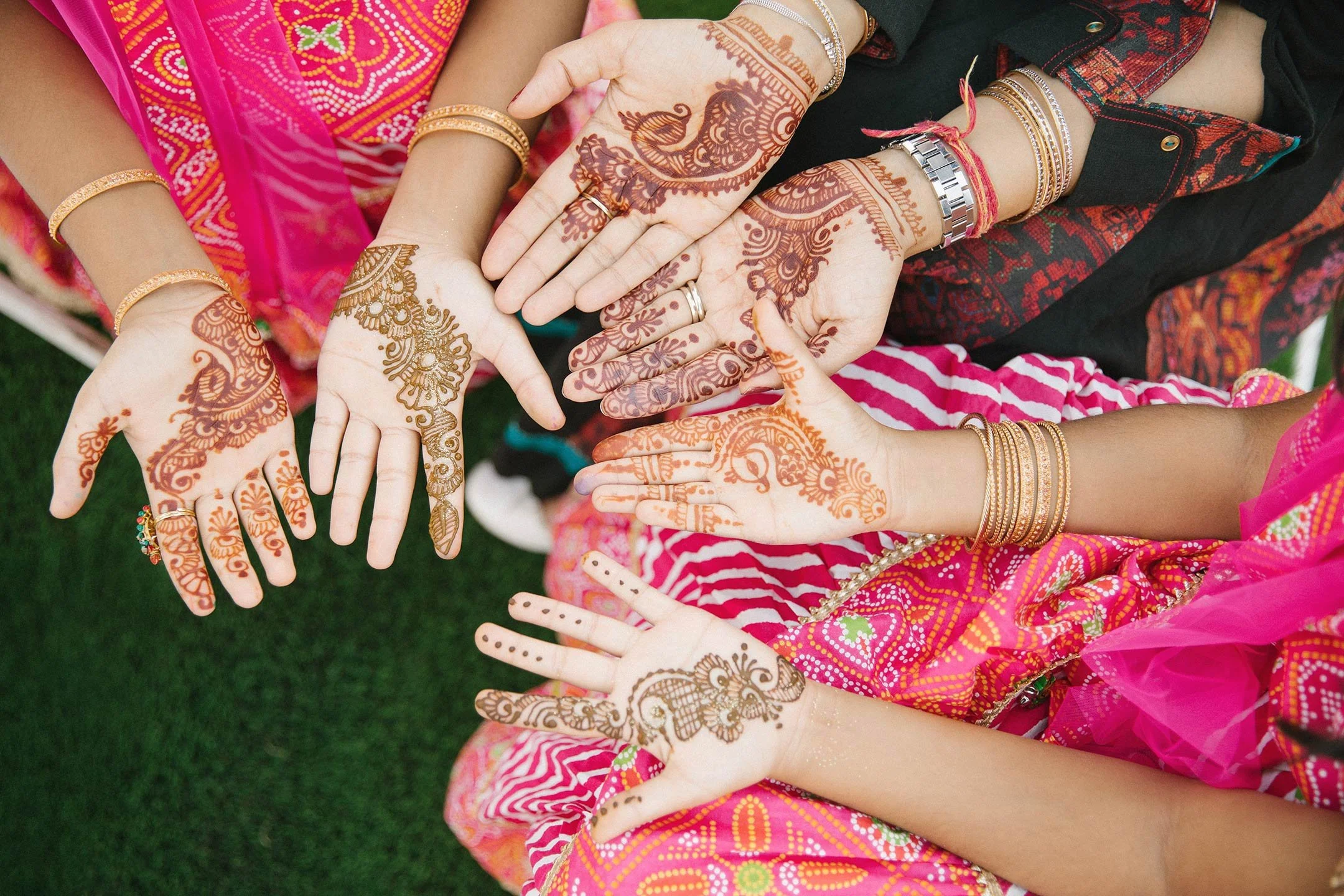The Stories We Carry: A Guide to Meaningful Wedding Traditions
Planning a wedding is one of life’s most personal creative endeavors and a reflection of commitment,
history, and identity. Yet as couples begin planning, they often discover just how many
expectations come with that joy. From how you walk down the aisle to who gives the toasts, so
much of what we do at weddings is rooted in tradition, sometimes centuries old, though few of
us stop to ask why.
As a San Francisco wedding photographer, I’ve had the honor to observe how so many couples
reinterpret these customs, blending old and new, honoring family history while creating a
celebration that feels authentically their own. Many of today’s weddings also reflect a beautiful
mix of cultures and heritages, where couples bring together rituals from different traditions to
celebrate both their individuality and shared story.
Understanding where these traditions come from can help you make choices that hold meaning,
whether you decide to uphold, update, or skip them entirely.
This guide explores the fascinating origins of some of today’s most beloved wedding rituals, how
they’ve evolved, and ideas for how to make them beautifully yours.
The White Dress
Contrary to popular belief, the white wedding dress did not originally symbolize purity or
innocence. For centuries, brides simply wore their best dress, often in rich colors like red, gold,
or blue. The white gown emerged as a symbol of wealth rather than virtue, since a delicate
white fabric was expensive to clean and likely worn only once.
The trend took hold in 1840 when Queen Victoria chose a white lace gown for her marriage to
Prince Albert. Her choice captured public imagination, inspiring generations of brides and
transforming white into the standard color of bridal elegance.
Today, modern couples have redefined what the white dress represents. Brides are embracing
gowns in shades of champagne, blush, and even bold jewel tones, each choice reflecting a
more personal expression of style. Designers like House of Savin, based in London, are leading
this evolution with hand-painted creations that feel like wearable art. I recently returned from
New York Bridal Fashion Week, where I had the opportunity to photograph several upcoming
collections. House of Savin’s designs are bold and stunning!
A hand painted gown from House of Savin’s 2026 collection.
The Wedding Veil
The veil is one of the oldest wedding traditions, dating back thousands of years. In ancient
Greece and Rome, brides were covered in brightly colored veils to ward off evil spirits and
protect them from envious eyes. During the Middle Ages, veils became symbols of purity and
modesty, reflecting religious ideals of the time. By the Victorian era, they had transformed again.
Queen Victoria’s white veil set a new standard of bridal fashion that still echoes today.
Modern brides have reclaimed the veil as a form of self-expression. Some choose intricate
cathedral-length veils embroidered with heirlooms, while others opt for vintage birdcage styles
inspired by San Francisco’s Art Deco era. Many forgo veils entirely in favor of floral crowns, chic
hats, or sculptural hairpieces that better express their style
The Wedding Cake
A Croquembouche tower.
Long before the towering confections we know today, wedding cakes were symbolic offerings. In
ancient Rome, a barley or wheat cake was broken over the bride’s head to symbolize fertility
and prosperity. During the Middle Ages, guests would stack small buns into a tower for the
couple to kiss over as it was believed this would ensure abundance in their marriage.
By the 17th century, sugar had become a luxury commodity, and the wedding cake evolved into
a display of status. White icing, still so iconic today, originally represented extravagance and
purity.
One of the most intimate wedding rituals is when couples feed each other a piece of cake. This
tradition dates back to those early Roman customs, representing the couple’s promise to care
for, nourish, and provide for one another.
Many couples treasure the cake-cutting moment because it connects them to generations
before them. The image of grandparents cutting their cake, often captured in black and white,
remains a cherished symbol of family continuity. In modern wedding photography, the
cake-cutting photo continues to be one of the most meaningful images from the celebration.
Couples in the Bay Area are embracing everything from vintage-inspired tiered cakes adorned
with pressed flowers to minimalist buttercream creations that echo the city’s clean architectural
lines. Local favorites like Tarts de Feybesse craft spectacular Croquembouche towers, turning
confections into storytelling and making edible reflections of love that feel as individual as the
couple themselves. The croquembouche (its name means “crunch in the mouth,” referring to the
crisp caramel coating) originated in France in the late 18th century as a celebratory centerpiece
of stacked cream puffs or profiteroles bound with caramel. This traditional French wedding cake
is most credited to Antonin Carême, the famed French chef often called the father of haute
cuisine, and symbolizes joy and prosperity for weddings and other festive occasions.
The Bouquet and Garter Toss
A bride’s bouquet with warm yellow and peach tones from Miss Florism.
The bouquet and garter tosses are some of the more whimsical wedding customs, but their
origins are surprisingly superstitious. In medieval Europe, touching the bride was believed to
bring good luck, and guests would often try to tear pieces of her gown for a keepsake. Brides
began tossing their bouquets to distract the crowd and protect their dresses, and the garter toss
evolved similarly.
By the 1900s, these acts became lighthearted gestures of luck. Many modern couples now skip
them entirely, opting for a “bouquet of gratitude” to honor loved ones, an anniversary dance that
recognizes longevity in marriage, or the shoe game which shows how well the newly married
couple know one another.
Florists like Mis Florism craft arrangements that blend historic meaning with modern beauty.
One bride of a wedding that I recently photographed even displayed her aunt’s preserved
bouquet at the ceremony, a touching nod to family legacy and connections.
Exchanging Wedding Rings
The tradition of wedding rings started when Ancient Egyptians braided reeds into circular bands
to represent eternity. The Romans later adopted rings as signs of ownership; a woman might
receive both an iron ring for daily wear and a gold one for public display.
The custom of wearing the ring on the fourth finger of the left hand comes from the Roman
belief in the vena amoris or the “vein of love” that is thought to lead directly to the heart.
Today, rings represent partnership rather than possession. In the Bay Area, many couples
choose ethically sourced metals or custom designs by jewelers like Brilliant Earth, known for
their responsible sourcing, or Lang Antiques in Union Square for their beautiful vintage and
antique pieces.
The First Dance
The first dance originated in royal courts, where the guests of honor would open the ball with a
waltz. As music evolved, so did the meaning. By the early 20th century, jazz and swing
transformed the moment into one of personal expression and romance.
Now, couples use their first dance to tell a story. Some choose timeless ballads, while others
surprise guests with choreographed performances that blend eras and genres. Local jazz band
Cosmo Alley Cats brings a touch of vintage charm to modern celebrations, evoking the golden
age of live music.
Something Old, Something New
The familiar rhyme “Something old, something new, something borrowed, something blue”
originated in 19th-century England as a charm for luck and continuity. “Something old”
represented family connection, “something new” symbolized optimism, “something borrowed”
carried the happiness from another marriage, and “something blue” stood for fidelity.
Modern couples interpret this tradition in personal ways. Some sew a piece of fabric from a
loved one’s garment into their attire, while others wear heirloom jewelry or incorporate vintage
fabrics from San Francisco thrift finds.
Not Seeing Each Other Before the Ceremony
The idea that it is bad luck for a couple to see each other before the ceremony goes back to the
era of arranged marriages. Families feared that a groom might reconsider the match if he saw
his bride beforehand, so the veil and the “no-seeing” rule ensured the deal would go through.
Today, many couples reject that superstition through a “first look,” a private, intentional moment
before the ceremony to connect and calm nerves. The result are often sometimes my couples favorite
candid moments from their wedding day photo gallery.
Breaking of the Glass
One of the most recognizable moments in a Jewish wedding is the breaking of the glass,
traditionally performed at the end of the ceremony. The origin of this custom dates back to
ancient times and carries multiple interpretations. Some say it serves as a reminder of the
destruction of the Temple in Jerusalem, symbolizing the bittersweet nature of joy even in
moments of great happiness. Others view it as a representation of the fragility of human
relationships and the commitment required to maintain them.
After the glass is shattered beneath the groom’s (or sometimes both partners’) foot, guests
cheer “Mazel Tov,” meaning congratulations or good fortune. It marks both an ending and a
beginning, capturing the essence of joy, memory, and hope.
Jumping the Broom
A bride and groom jump the broom at UC Berkeley’s Botanical Gardens.
Jumping the broom is a tradition deeply rooted in African and African American wedding history.
During the era of slavery in the United States, enslaved people were often forbidden to marry
legally. Jumping over a broom together became a powerful symbolic gesture of union and
commitment.
The custom is believed to have origins in West African communities, where brooms represented
sweeping away past wrongs and welcoming new beginnings. Over time, it became a deeply
meaningful act of love and resilience. Today, couples continue to honor this ritual as a wonderful tribute to heritage.
The Tea Ceremony
An intimate morning tea ceremony in San Francisco.
In Chinese and other East Asian cultures, the tea ceremony is one of the most meaningful
wedding rituals. Dating back centuries, it symbolizes respect, gratitude, and the joining of two
families. During the ceremony, the couple kneels before their parents and elders to serve tea,
expressing appreciation for their guidance and blessings.
The ritual is often marked by elegance and intention, with tea sets passed down through
generations and chosen for their symbolic design. The act itself is both simple and profound.
The Sangeet
Henna at a Sangeet
The Sangeet is a joyful pre-wedding celebration in Indian culture, filled with music, dance, henna tattooing, and family connection.
The word “Sangeet” translates to “sung together,” and historically it served as a gathering for the families of the bride and groom
to meet before the wedding. Over time, it has evolved into a lively evening that blends tradition and festivity. Songs often tell
stories of love and family, while dance performances celebrate unity and excitement for the days ahead.
The Sofreh Aghd
A Sofreh set up at Willow Camp Stinson Beach.
The Sofreh Aghd is a central element of Persian weddings, an elaborate spread of symbolic
items displayed during the ceremony. Each object on the table holds meaning: crystallized sugar
represents sweetness; candles symbolize energy and clarity; and a mirror reflects the couple’s
bright future together. The word “Sofreh” means “spread,” and “Aghd” refers to the ceremony
itself.
This thousands of year old tradition was influenced by Zoroastrian customs that celebrated light
and love. The beauty of the Sofreh lies also in its message: that marriage is a union of hearts, minds, and intentions.
Creating a Celebration that Feels Like You!
Traditions connect us to generations of love stories that came before our own. But the most
memorable weddings are those that feel deeply personal. The key is intention, knowing which
customs hold meaning for you and which you can gently let go of.
Some couples intentionally choose certain cultural traditions to honor their heritage, blending
elements such as a morning tea ceremony with a horah dance at the reception.
As a San Francisco wedding photographer, my goal is always to capture more than moments.
It’s to capture meaning. The laughter between rituals, the glances that say “this is ours,” the
subtle details that tell your story. When your wedding day is shaped by authenticity, every image
becomes timeless.
Whether you embrace every tradition or rewrite them entirely, remember that your wedding is a
reflection of the beginning of your own story together.
In collaboration with The Lifestyle Historian
Check out my guide to Planning Your Multicultural Wedding

















